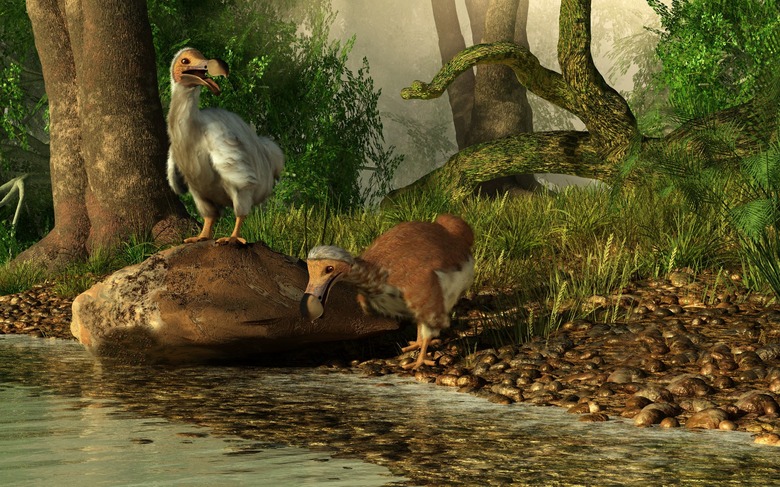Colossal Biosciences Wants To Bring Back The Dodo From Extinction
You've probably heard of Colossal Biosciences' plans to bring the woolly mammoth back to life, but now it's betting on yet another extinct creature. The company also wants to revive the dodo, yet another push towards genetically engineering creatures of the past.
Of course, it isn't as simple as cloning the discovered DNA and making something out of it. The company's big plan to revive the woolly mammoth essentially boils down to making a mammoth and elephant hybrid, allowing it to protect the animal's native habitat from climate change. But why exactly would anyone want to revive the dodo?
First, we have to look at the bad reputation that these flightless birds have received over the years. For one, they aren't as stupid and clumsy as people often make them out to be. Instead, the dodo was actually quite resilient and even reasonably intelligent. More importantly, though, reviving the dodo would help fight back against invasive species on his native island of Mauritius.
The dodo has only been extinct since the 17th century when hunting and deforestation led to the flightless bird vanishing from our planet. It's a similar story to the Tasmanian tiger, which Colossal Biosciences also hopes to revive. By reviving the dodo, the company could help undo some of the damage humanity has done to the planet and give this species another lease on life.
And the scientists working on this project are already making a good bit of headway, too. Last March, Beth Shapiro, a biologist at the University of California, Santa Cruz, as well as a member of Colossal's scientific advisory board, was among a group of scientists who became the first to sequence the entire dodo genome, opening the door for a chance to revive the dodo from the dead.
The company will rely on similar methods to try to bring the flightless bird back to life by attempting to create an embryo for the dodo genetics to grow in from the DNA of a Nicobar pigeon. The task is sure to be difficult, but if it works out, we could see a new form of dodo returned to its original habitat in the coming years.
